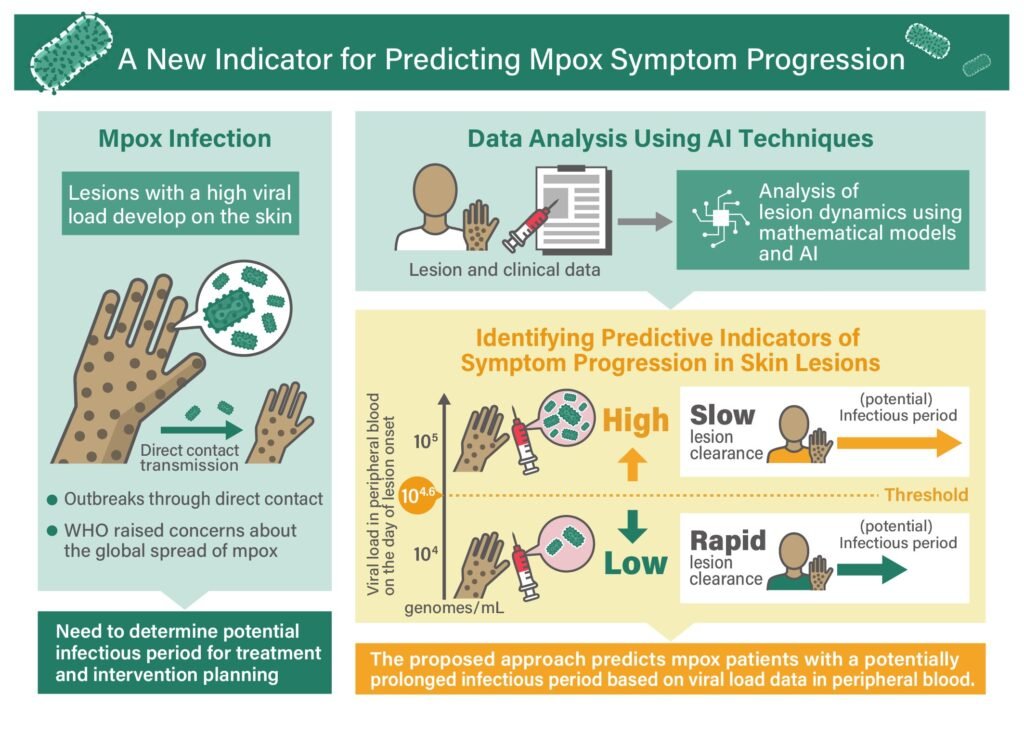In August 2024, the World Health Organization issued a second “Public Health Emergency of International Concern” for mpox, a highly contagious viral disease. The current outbreak in Africa is primarily driven by the clade I variant, with several countries reporting their first cases of this more severe strain.
Researchers from Nagoya University, in collaboration with other institutions, have made a significant breakthrough in predicting the severity of mpox symptoms. By measuring the viral load in the blood of patients when skin lesions first appear, they have developed a new approach that can indicate whether a patient will experience mild or severe progression of the disease.
The study, titled “Modeling lesion transition dynamics to clinically characterize patients with clade I mpox in the Democratic Republic of the Congo,” was published in the prestigious journal Science Translational Medicine. By analyzing viral loads during the early stages of infection, the researchers were able to predict the likelihood of patients developing severe symptoms, thereby improving treatment strategies for future outbreaks.
Mpox is characterized by a distinctive rash and flu-like symptoms and is primarily spread through direct contact with skin lesions. Patients are advised to avoid contact with others until their lesions have completely healed. However, the progression of skin lesions varies among patients, making it challenging to determine when a patient is no longer contagious.
The study focused on patients infected with the clade Ia strain of the virus in the Democratic Republic of the Congo, the country most affected by the outbreak. By analyzing the amount of virus present in the patients’ blood when skin lesions first appeared, the researchers were able to track the evolution of the lesions over time.
Through mathematical modeling and machine learning, the researchers identified a specific threshold of viral load—approximately 40,000 viral copies per milliliter—that could reliably predict whether a patient would have a mild or severe case of the disease. Patients with viral levels above this threshold were more likely to experience severe symptoms and prolonged infectiousness.
The clade Ia strain of mpox has a mortality rate of around 10%, significantly higher than the mortality rate of the clade IIb strain during the global outbreak in 2022. The current outbreak, which has spread to neighboring countries, also involves the clade Ib variant. The research team plans to test their method on the clade Ib variant in future studies.
Early prediction of disease severity could enable healthcare providers to offer more intensive treatment and monitoring to patients at risk of developing severe symptoms. This personalized, data-driven approach to medicine could provide patients and their families with clearer expectations about recovery timelines and more precise medical predictions following a diagnosis of mpox.
For more information on this groundbreaking research, you can access the study titled “Modeling lesion transition dynamics to clinically characterize patients with clade I mpox in the Democratic Republic of the Congo” in Science Translational Medicine. This study represents a significant step towards improving the management of mpox outbreaks and providing better care for affected individuals.


